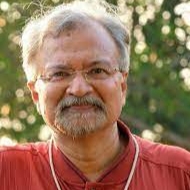Amidst Vladimir Putin’s prolonged presidency in Russia, the conflict in Ukraine has persisted in the third year alongside escalating geopolitical tensions in the Arctic. The United States’ imposition of fresh sanctions, especially following the death of opposition leader Alexei Navalny in prison, indicates a deepening strategic rivalry in the Arctic region. The situation is further complicated by Sweden’s recent decision to join NATO, extending the alliance’s reach into the High North. China’s growing presence in the Arctic has also caught the attention of Western powers, prompting strategic reactions. Meanwhile, Russia’s threats to withdraw from the Arctic Council and even consider the use of nuclear weapons signal the increasingly high stakes in the Polar region’s geopolitics.
Over the past two years, the U.S. expanded its sanctions regime on entities within Russia’s military-industrial base. These measures targeting defense companies aim to address concerns about Russia’s war economy diverting resources from non-defense sectors, and thereby endangering its future economic prospects. The U.S. Treasury Department’s actions contribute to an ongoing campaign targeting advanced manufacturing and technology areas with a view to weakening Russia’s military capabilities.
It was on the eve of the second anniversary of the Russian war in Ukraine that President Joe Biden announced the imposition of new sanctions targeting Russia’s war capabilities. Since Russia’s 2022 invasion of Ukraine, over 16,500 sanctions have been imposed by Western nations, impacting Russia’s foreign reserves, banks, and oil industry. Despite sanctions, Russia evaded measures, selling oil above the G7’s cap and importing goods through intermediary countries with support from China. The U.S. Treasury claims sanctions cut 5% from Russia’s potential economic growth over two years.
The third round of sanctions targetted Russia’s Arctic LNG 2 project, focusing on ship construction in Russia and South Korea. These measures aim to delay the project’s first shipment by imposing sanctions on South Korean and Russian shipyards involved in construction. These sanctions are expected to further complicate Russian giant Novatek’s shipping capacity efforts for the Arctic LNG 2 project. Despite international sanctions, Russia’s dependence on hydrocarbon exports and the growing global demand for LNG provide incentives for finding buyers.
China has vehemently opposed U.S. sanctions on Chinese enterprises for Russia-related reasons. The Biden administration’s announcement of new trade restrictions on entities from various countries supporting Russia’s war effort reflects the sensitive dimension of geopolitical and economic entanglements.
Meanwhile, a private intelligence report by Strider Technologies indicated Russia’s deepening cooperation with China in the Arctic amid financial and diplomatic challenges resulting from the Ukraine war. Russia’s strategic shift involves actively involving China in the Arctic, seeking partnerships despite past exclusions and suspension of cooperation by Arctic Council members. The report notes a significant increase in Chinese-owned companies registering in the Arctic since last year.
Russia has suspended its annual payments to the Arctic Council, citing the need for ‘real work’ involving all member countries. The suspension has affected about a third of the council’s 130 projects, hindering new initiatives and renewals. While Russia is not currently considering leaving the Council, recent statements suggest a reassessment of its position. There are indications that if the Council becomes unfriendly to Russia, Moscow may reconsider its membership. Kremlin spokesperson Dmitry Peskov stated that Russia presently remains part of the Arctic Council. However, he mentioned the possibility of withdrawal if participation no longer aligns with Russia’s interests or is considered ineffective, unfair, or inappropriate.
It was in this context that President Putin, in his Federal Assembly address, highlighted Russia’s strategy to tackle geopolitical challenges, emphasizing focus on key regions like the Arctic and Far East. He addressed concerns over NATO’s expansion, notably the addition of Sweden and Finland to the alliance.
Moscow knows that Sweden’s NATO membership, along with Finland’s recent entry, marks the most significant NATO expansion since the 1990s. These two additions are expected to simplify NATO’s defense planning, enhance cooperation on its northern flank, and bring valuable military resources into the alliance. Sweden’s meeting of NATO’s 2% GDP spending threshold further strengthens the alliance.
A few months back, the U.S. released the National Strategy for the Arctic Region (NSAR), a ten-year agenda updating its 2013 predecessor. Alongside this, the Administration brought out the Implementation Plan for the NSAR (NSARIP), outlining over 30 objectives and 200 actions. President Biden reiterated the U.S. commitment to deepen cooperation with Arctic allies and partners, particularly in managing risks related to militarization and unintended conflicts against the backdrop of geopolitical tensions with Russia and China. The United States continues to prioritize collaboration in the Arctic, building on its role in developing governance architecture.
In short, the Arctic is set to witness new geopolitical shifts, worsened by the prolonged war in Ukraine. The U.S. sanctions targeting Russia’s Arctic LNG 2 project indicate a closely packed contest of economic and security interests in the region. The deepening collaboration between Russia and China in the Arctic may further disrupt the situation. With Finland and Sweden joining NATO, the U.S. bolsters its Arctic strategy and the High North has become a major terrain for strategic maneuverings.
[Photo by Ministry of Defence of the Russian Federation, via Wikimedia Commons]
K.M. Seethi is ICSSR Senior Fellow and the Academic Advisor of the International Centre for Polar Studies at Mahatma Gandhi University, Kerala. The views and opinions expressed in this article are those of the author.

K.M. Seethi is ICSSR Senior Fellow and the Academic Advisor of the International Centre for Polar Studies at Mahatma Gandhi University, Kerala. He also served as Senior Professor and Dean of International Relations at MGU.

